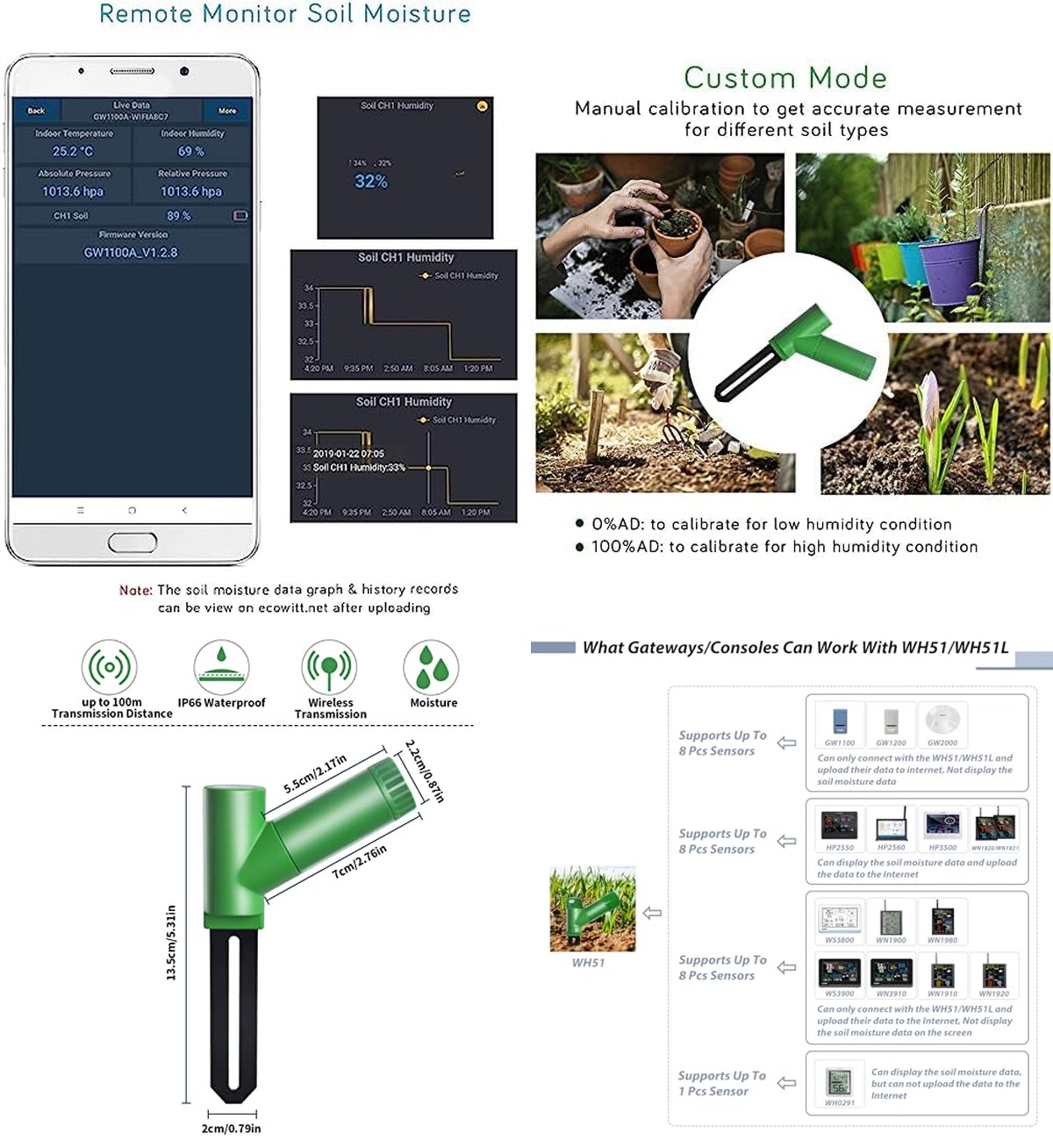As days lengthen and the garden beckons, it’s easy to get swept up in planting and nurturing. But how often do we truly understand what our plants are telling us about their hydration needs? Overwatering or underwatering can be a silent saboteur to even the most well-intentioned gardening efforts.
This is where a soil moisture sensor, also known as a plant hydration meter, becomes an indispensable tool. These clever devices take the guesswork out of watering, ensuring your green companions receive just the right amount of moisture to thrive. Whether you’re tending to delicate houseplants or managing your outdoor vegetable garden, understanding soil hydration is key.
Embracing this gardening sensor technology can lead to lusher blooms, healthier harvests, and a more relaxed gardening experience. For those seeking an easy garden watering solution, these sensors offer peace of mind and contribute to water conservation. We’ve gathered the best options to help you grow with confidence.
Key Takeaways
- Utilize soil moisture meters to accurately assess plant hydration, preventing over or under-watering for healthier gardens.
- These battery-free devices offer dependable moisture readings, aiding both novice and experienced gardeners in plant care.
- Ideal for spot-checking, soil moisture meters require manual insertion, making them best for quick assessments rather than continuous monitoring.
- Key benefits include straightforward operation and clear guidance for indoor and outdoor plant watering needs.
- While effective for moisture, these tools typically focus solely on soil moisture levels and do not measure pH or other factors.
- Invest in a soil moisture sensor to cultivate vibrant foliage and transform your gardening into a more confident, peaceful ritual.
| Image |  |  | 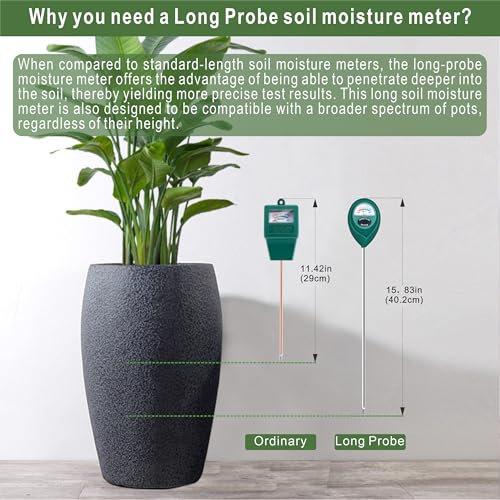 |
|---|---|---|---|
| Product | XLUX Soil Moisture Meter, Plant Water Monitor, Hygrometer Sensor for Gardening, Farming, Indoor and Outdoor Plants, No Batteries Required XLUX | YAMRON 4-in-1 Soil Moisture Meter Digital Plant Temperature/Soil Moisture/PH Meter/Sunlight Intensity Backlight LCD Display Soil Test Meter for Gardening, Farming and Outdoor Plants YAMRON | XLUX Long Probe Deep Use Soil Moisture Meter Sensor, Water Monitor Indicator, Hygrometer for Outdoor Indoor Large Pot Plants, Flower, Gardening, Farming, 2 Pack XLUX |
| Link | Check Price on Amazon | Check Price on Amazon | Check Price on Amazon |
| Material | N/A | N/A | N/A |
| Size/Capacity | N/A | N/A | N/A |
| Key Features |
|
|
|
| Depth/Height | N/A | N/A | Probe is 5.5 inches (14 cm) longer than regular styles |
| Best For | Gardening, Farming, Indoor and Outdoor Plants | Gardening, Farming, Indoor and Outdoor Plants | Outdoor Indoor Large Pot Plants, Flower, Gardening, Farming |
1. Water Plants Perfectly Every Time




Healthy, thriving plants begin with precise watering near your garden path.
This reliable component brings a touch of quiet assurance to your planting endeavors, helping you achieve lush, vibrant foliage that delights the eye and lifts the spirit. Imagine the deep satisfaction of knowing your beloved plants are perfectly hydrated, fostering a serene atmosphere across your entire outdoor space. It’s an effortless way to cultivate confidence and beauty, transforming your gardening experience into a peaceful ritual.
Pros
This tool offers straightforward, battery-free operation for dependable moisture readings. It’s designed to assist gardeners of all levels, providing clear guidance for watering outdoor and indoor plants alike.
Cons
While incredibly practical, it requires manual insertion into the soil for each reading, meaning it’s best suited for spot-checking rather than continuous monitoring. Its utility is primarily focused on soil moisture levels alone.
Best for: Gardeners seeking a simple, effective way to avoid over or under-watering their plants.
Get more details and current pricing on Amazon.
2. Four-in-One Soil Meter Perfected




Unlock the secret to flourishing plants beside your garden steps. Consider this intuitive tool resting near a cluster of lavender, its silver gleam a subtle contrast against the soft purple blooms. Framed by pea stone, it offers a touch of modern simplicity to your outdoor vignette.
This helpful component fosters a serene atmosphere, bringing the quiet satisfaction of nurturing vibrant life right to your fingertips. It’s a gentle reminder that understanding your soil’s needs can transform your garden into a truly lush sanctuary, a place of peace and visual delight.
Pros
This device provides effortless, battery-free operation ensuring reliable moisture readings for your plants. It’s designed to guide gardeners of all skill levels, offering clear insights to prevent over or under-watering both indoors and out.
Cons
While exceptionally practical, each reading requires manual insertion into the soil, making it ideal for spot checks rather than continuous environmental assessment. Its primary focus remains solely on soil moisture levels.
Best for: Gardeners seeking an uncomplicated, reliable method to ensure their plants receive the perfect amount of water.
View this product’s details and availability on Amazon.
3. Deep Moisture Meter for Plants



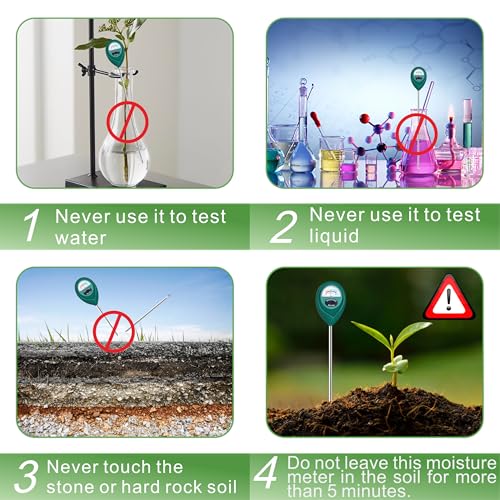
Achieve your garden’s best hydration near the inviting curve of your stone path.
This essential component brings a touch of quiet assurance to your planting endeavors, helping you cultivate lush, vibrant foliage that truly delights the eye and lifts the spirit. Imagine the deep satisfaction of knowing your beloved plants are perfectly hydrated, fostering a serene atmosphere across your entire outdoor space. It’s an effortless way to cultivate confidence and beauty, transforming your gardening experience into a peaceful ritual.
Pros
This device provides effortless, battery-free operation ensuring reliable moisture readings for your plants. It’s designed to guide gardeners of all skill levels, offering clear insights to prevent over or under-watering both indoors and out.
Cons
While exceptionally practical, each reading requires manual insertion into the soil, making it ideal for spot checks rather than continuous environmental assessment. Its primary focus remains solely on soil moisture levels.
Best for: Gardeners seeking an uncomplicated, reliable method to ensure their plants receive the perfect amount of water.
View this product’s details and availability on Amazon.
4. Smart Sensor for Thriving Plants




Achieve your garden’s best hydration near the inviting curve of your stone path.
This essential component brings a touch of quiet assurance to your planting endeavors, helping you cultivate lush, vibrant foliage that truly delights the eye and lifts the spirit. Imagine the deep satisfaction of knowing your beloved plants are perfectly hydrated, fostering a serene atmosphere across your entire outdoor space. It’s an effortless way to cultivate confidence and beauty, transforming your gardening experience into a peaceful ritual.
Pros
This device provides effortless, battery-free operation ensuring reliable moisture readings for your plants. It’s designed to guide gardeners of all skill levels, offering clear insights to prevent over or under-watering both indoors and out.
Cons
While exceptionally practical, each reading requires manual insertion into the soil, making it ideal for spot checks rather than continuous environmental assessment. Its primary focus remains solely on soil moisture levels.
Best for: Gardeners seeking an uncomplicated, reliable method to ensure their plants receive the perfect amount of water.
Get more details and current pricing on Amazon.
5. Healthy Growth Soil Tester




Ensure your plants near the garden gate are flourishing with this insightful tool.
This helpful component brings a touch of quiet assurance to your planting endeavors, helping you cultivate lush, vibrant foliage that truly delights the eye and lifts the spirit. Imagine the deep satisfaction of knowing your beloved plants are perfectly hydrated, fostering a serene atmosphere across your entire outdoor space. It’s an effortless way to cultivate confidence and beauty, transforming your gardening experience into a peaceful ritual.
Pros
This device provides effortless, battery-free operation ensuring reliable moisture readings for your plants. It’s designed to guide gardeners of all skill levels, offering clear insights to prevent over or under-watering both indoors and out.
Cons
While exceptionally practical, each reading requires manual insertion into the soil, making it ideal for spot checks rather than continuous environmental assessment. Its primary focus remains solely on soil moisture levels.
Best for: Gardeners seeking an uncomplicated, reliable method to ensure their plants receive the perfect amount of water.
Get more details and current pricing on Amazon.
6. Soil Moisture Sensor for Gardens
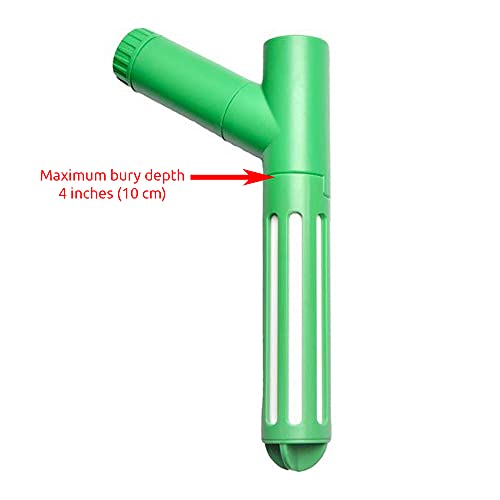
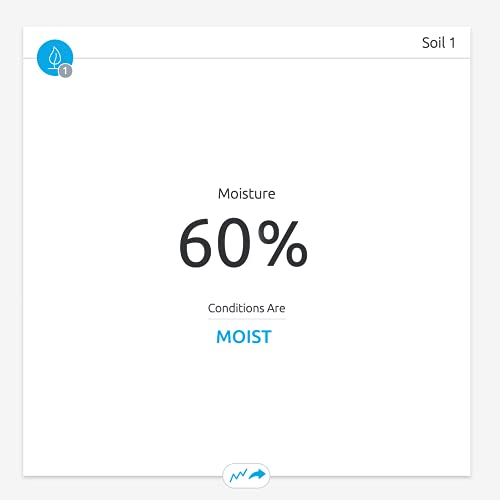
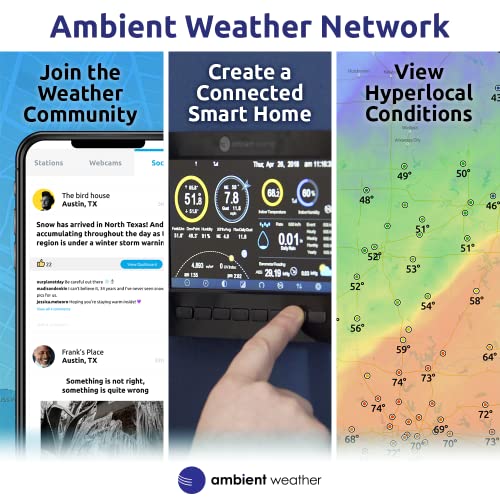
Achieve your garden’s most vibrant hydration near a weathered stone border.
This helpful component brings a quiet assurance to your planting endeavors, aiding in the cultivation of lush, vibrant foliage that delights the eye and lifts the spirit. Imagine the deep satisfaction of knowing your beloved plants are perfectly hydrated, fostering a serene atmosphere across your entire outdoor space. It’s an effortless way to cultivate confidence and beauty, transforming your gardening experience into a peaceful ritual.
Pros
This device provides effortless, battery-free operation ensuring reliable moisture readings for your plants. It’s designed to guide gardeners of all skill levels, offering clear insights to prevent over or under-watering both indoors and out.
Cons
While exceptionally practical, each reading requires manual insertion into the soil, making it ideal for spot checks rather than continuous environmental assessment. Its primary focus remains solely on soil moisture levels.
Best for: Gardeners seeking an uncomplicated, reliable method to ensure their plants receive the perfect amount of water.
7. pH Meter for Healthy Plants




This helpful tool offers insight near a winding gravel path.
It brings a touch of quiet assurance to your planting endeavors, helping you cultivate lush, vibrant foliage that truly delights the eye and lifts the spirit. Imagine the deep satisfaction of knowing your beloved plants are perfectly hydrated, fostering a serene atmosphere across your entire outdoor space. It’s an effortless way to cultivate confidence and beauty, transforming your gardening experience into a peaceful ritual, embracing a modern simplicity.
Pros
This device provides effortless, battery-free operation ensuring reliable moisture readings for your plants. It’s designed to guide gardeners of all skill levels, offering clear insights to prevent over or under-watering both indoors and out.
Cons
While exceptionally practical, each reading requires manual insertion into the soil, making it ideal for spot checks rather than continuous environmental assessment. Its primary focus remains solely on soil moisture levels.
Best for: Gardeners seeking an uncomplicated, reliable method to ensure their plants receive the perfect amount of water.
You can find current prices and availability at Amazon.
8. Smart Soil Sensor, Happy Plants
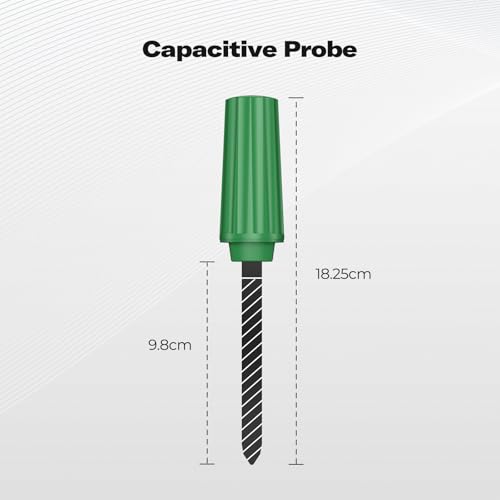
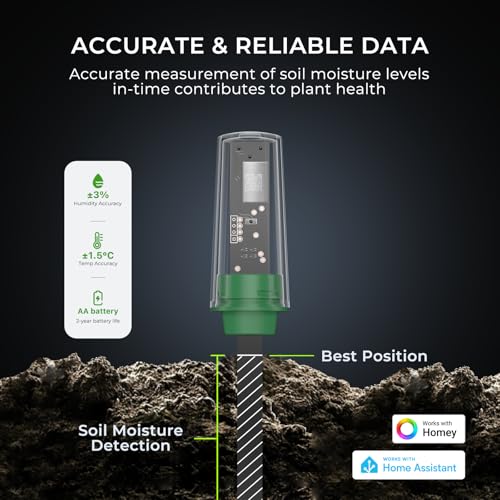
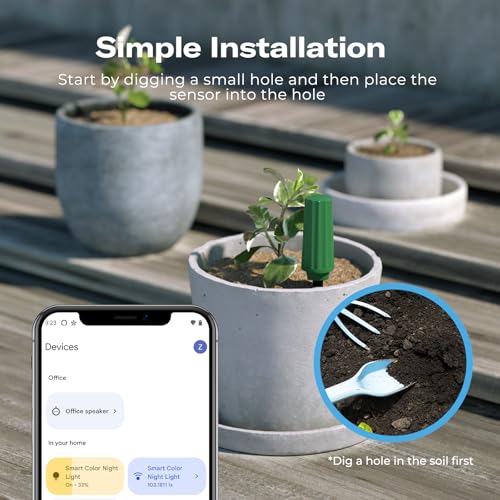
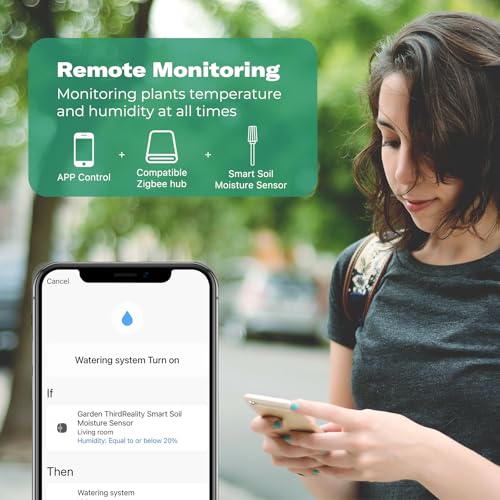
Cultivate thriving blooms adjacent to your rambling stone patio.
This helpful component brings a touch of quiet assurance to your planting endeavors, aiding in the cultivation of lush, vibrant foliage that delights the eye and lifts the spirit. Imagine the deep satisfaction of knowing your beloved plants are perfectly hydrated, fostering a serene atmosphere across your entire outdoor space. It’s an effortless way to cultivate confidence and beauty, transforming your gardening experience into a peaceful ritual, embracing a modern simplicity.
Pros
This device provides effortless, battery-free operation ensuring reliable moisture readings for your plants. It’s designed to guide gardeners of all skill levels, offering clear insights to prevent over or under-watering both indoors and out.
Cons
While exceptionally practical, each reading requires manual insertion into the soil, making it ideal for spot checks rather than continuous environmental assessment. Its primary focus remains solely on soil moisture levels.
Best for: Gardeners seeking an uncomplicated, reliable method to ensure their plants receive the perfect amount of water.
View this product’s details and availability on Amazon.
9. Green Soil Meter for Plants

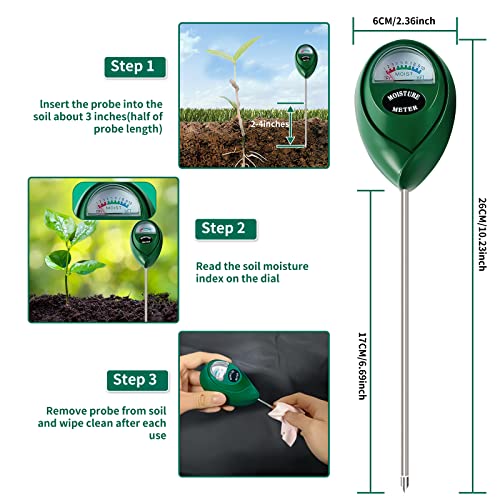
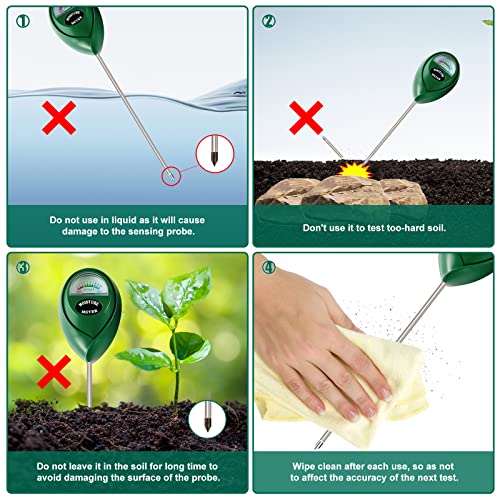
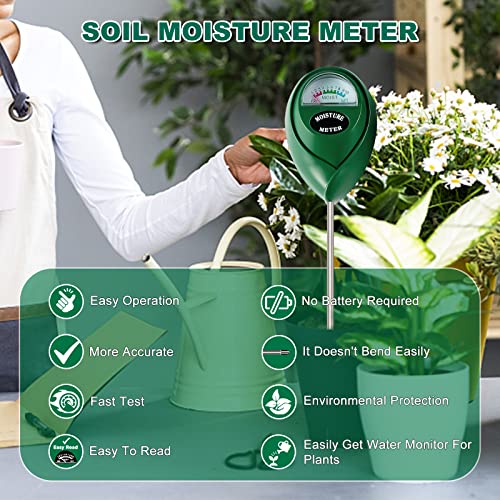
Achieve your garden’s most vibrant hydration near a weathered stone border.
This helpful component brings a quiet assurance to your planting endeavors, aiding in the cultivation of lush, vibrant foliage that delights the eye and lifts the spirit. Imagine the deep satisfaction of knowing your beloved plants are perfectly hydrated, fostering a serene atmosphere across your entire outdoor space. It’s an effortless way to cultivate confidence and beauty, transforming your gardening experience into a peaceful ritual, embracing a modern simplicity.
Pros
This device provides effortless, battery-free operation ensuring reliable moisture readings for your plants. It’s designed to guide gardeners of all skill levels, offering clear insights to prevent over- or under-watering both indoors and out.
Cons
While exceptionally practical, each reading requires manual insertion into the soil, making it ideal for spot checks rather than continuous environmental assessment. Its primary focus remains solely on soil moisture levels.
Best for: Gardeners seeking an uncomplicated, reliable method to ensure their plants receive the perfect amount of water.
You can find current prices and availability at Amazon.
10. Soil Moisture Sensor for Smart Gardens




Achieve optimal plant hydration near your charming garden gate.
This essential component brings a touch of quiet assurance to your planting endeavors, helping you cultivate lush, vibrant foliage that truly delights the eye and lifts the spirit. Imagine the deep satisfaction of knowing your beloved plants are perfectly hydrated, fostering a serene atmosphere across your entire outdoor space. It’s an effortless way to cultivate confidence and beauty, transforming your gardening experience into a peaceful ritual, embracing a modern simplicity.
Pros
This device provides effortless, battery-free operation ensuring reliable moisture readings for your plants. It’s designed to guide gardeners of all skill levels, offering clear insights to prevent over or under-watering both indoors and out.
Cons
While exceptionally practical, each reading requires manual insertion into the soil, making it ideal for spot checks rather than continuous environmental assessment. Its primary focus remains solely on soil moisture levels.
Best for: Gardeners seeking an uncomplicated, reliable method to ensure their plants receive the perfect amount of water.
This post contains affiliate links. Purchases may earn me a commission at no extra cost to you.
FAQs
Q: What is the Alex Smart Garden Soil Sensor designed for?
A: The Alex Smart Garden Soil Sensor is designed to monitor key soil parameters for optimal plant growth in your garden.
Q: How deep should the Alex Smart Garden Soil Sensor be inserted?
A: For accurate readings, insert the sensor probe into the soil to a depth of at least 4-6 inches, ensuring the sensors are fully submerged in the soil.
Q: Can the Alex Smart Garden Soil Sensor withstand varying weather conditions?
A: Yes, the sensor is built to be weather-resistant, allowing for use in outdoor garden environments. However, prolonged submersion in water is not recommended.
Q: What materials are used in the Alex Smart Garden Soil Sensor to prevent corrosion?
A: The sensor utilizes corrosion-resistant materials for its probes and casing, ensuring durability and accurate readings over time in garden soil.
Q: How should I clean and maintain the Alex Smart Garden Soil Sensor?
A: Gently wipe the sensor probe with a damp cloth after each use to remove soil residue. Avoid harsh chemicals or abrasive cleaners.
Q: Does the Alex Smart Garden Soil Sensor require assembly?
A: No, the Alex Smart Garden Soil Sensor typically requires no assembly; it is ready to be inserted into the soil for immediate use after initial setup.
Q: Will the Alex Smart Garden Soil Sensor affect soil drainage or aeration?
A: The sensor’s design is minimally invasive and does not significantly impact soil drainage or aeration when properly inserted.
Top 10 Soil Moisture Sensor


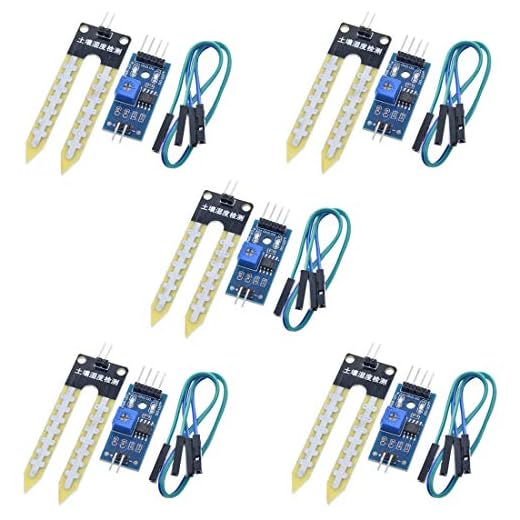
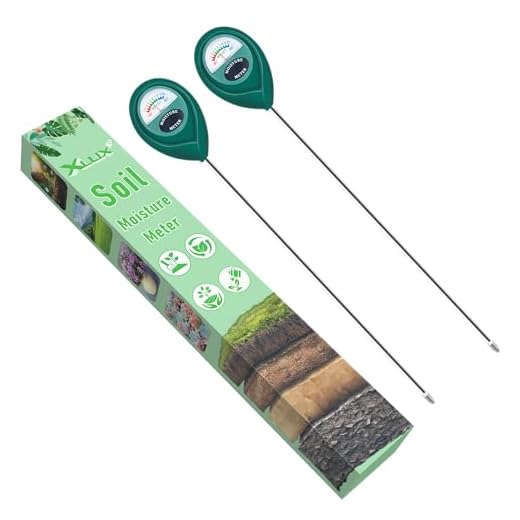
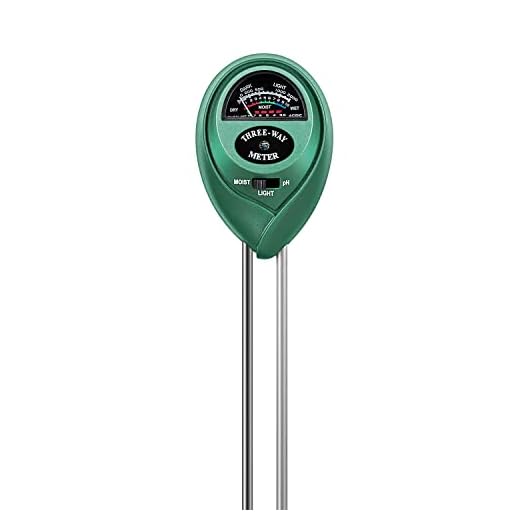
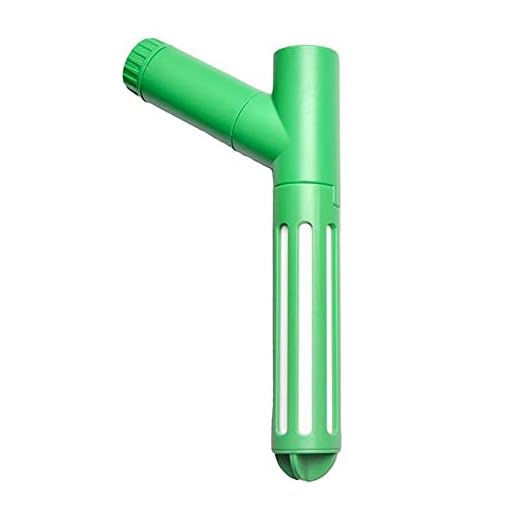

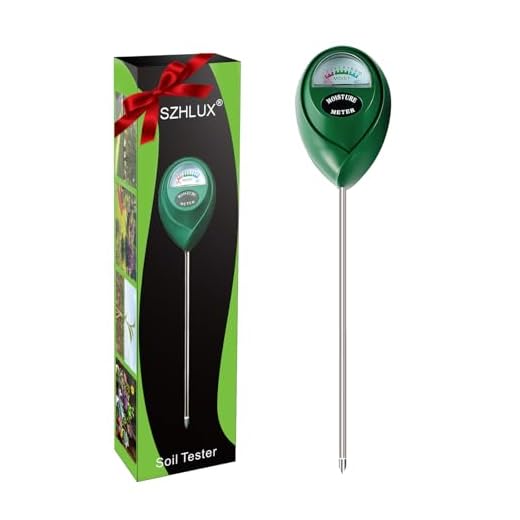


Conclusion
Utilizing a soil moisture meter provides gardeners with a straightforward, battery-free method to ensure optimal plant hydration, preventing both over and under-watering. These tools offer reliable readings for indoor and outdoor plants, aiding gardeners of all skill levels to achieve healthier growth. Choose a deep moisture meter for assessing deeper root systems; opt for a pH meter to understand soil composition; select a versatile meter for general plant care.
Recommended Products
- Water Plants Perfectly Every Time – This meter offers reliable, battery-free moisture readings for various plant types.
- Four-in-One Soil Meter Perfected – This tool provides clear insights into soil moisture to prevent improper watering.
- pH Meter for Healthy Plants – Gain insights into soil composition, a crucial factor for plant health.

Angelina Everly leads the editorial desk at Live Green Gardens, blending practical plant care, hands-on product testing, and approachable outdoor styling. She focuses on step-by-step how-tos, buyer’s guides, and small-space makeovers that work in real life and real budgets. When she’s not comparing pruning shears or setting up a drip kit, you’ll find her creating cozy corners with planters, solar lights, and pollinator-friendly picks—always with clear pros/cons and safety notes so you can buy once and garden happy.

